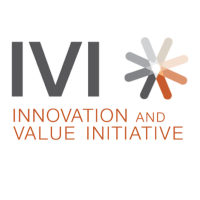IVI Research Brief: Open-Source Modeling Builds Trust, Validity & Rapid-Cycle Learning in Value Assessment

Alexandria, VA, November 23, 2020 --(PR.com)-- The Innovation and Value Initiative (IVI) - a nonprofit organization dedicated to advancing the science, practice and use of value assessment in healthcare - today released its latest Value Blueprints research brief describing the benefits and challenges of employing open-source modeling in value assessment. In open-source models, the full source code, underlying data and supporting documentation are free to access, review, use, modify and redistribute with attribution to the original developers.
“The COVID pandemic has emphasized the importance of rapid-cycle learning and shown how open-source epidemiological modeling is fostering trust as health researchers, economists and industry leaders find ways to share data and contribute insights without losing a competitive advantage,” said Jennifer Bright, IVI’s executive director. “These benefits extend to the mathematical modeling that drives economic value assessments used to guide decisions about how we allocate healthcare resources. Open-source modeling and the principles it represents – collaboration, transparency, rigor – are the bedrock of IVI’s research and modeling. We are very encouraged by the rapidly growing interest in open-source modeling in the value assessment community.”
Value assessment in healthcare is exceedingly complex, IVI’s brief points out, and scientific uncertainty is exacerbated when the structural assumptions aren’t transparent. This makes a model more difficult to replicate or validate, which hinders the ability to build consensus and demonstrate relevance. It also slows the learning cycle and interrupts innovation, defining and paying for the highest value intervention possible.
IVI’s research brief highlights the potential benefits of open-source models, including:
· Building wider trust in models by making them transparent and allowing others to test and validate them;
· Providing the flexibility needed to adapt models to the unique needs of different decision makers; and
· Fostering rapid-cycle development that advances the methods and applications of value assessment.
IVI’s Value Blueprint research brief also discusses challenges that must be addressed to accelerate the acceptance and use of open-source modeling in health economics.
For example, IVI points to the issue of proprietary ownership of intellectual property as a significant barrier to open-source development and widespread use in modeling. IVI also says financial and technical resource investment to develop open-source modeling is significant, may not be fully recoverable and potentially hinders model developers’ incentives without a license or fee to recoup their investments. A third challenge highlighted by the IVI brief is a lack of consistent processes to update original open-source models with new scientific data or insights creating barriers for users’ certainty they are utilizing the most up-to-date model.
Through its Open-Source Value Project, IVI has built two value assessment models and is in the process of constructing its third. All IVI models are accessible through user-friendly interfaces and the complete source code and documentation are hosted on Github.
“The goal of using open-source to build value assessment models is to accelerate learning, facilitate inclusive collaboration, and build trust as modern methods and tools for real-world healthcare decision making advance,” Bright said. “We’re gratified by how the open-source approach is catching on in health economics, and IVI looks forward to continuing work to address barriers to universal use of open-source modeling.”
“The COVID pandemic has emphasized the importance of rapid-cycle learning and shown how open-source epidemiological modeling is fostering trust as health researchers, economists and industry leaders find ways to share data and contribute insights without losing a competitive advantage,” said Jennifer Bright, IVI’s executive director. “These benefits extend to the mathematical modeling that drives economic value assessments used to guide decisions about how we allocate healthcare resources. Open-source modeling and the principles it represents – collaboration, transparency, rigor – are the bedrock of IVI’s research and modeling. We are very encouraged by the rapidly growing interest in open-source modeling in the value assessment community.”
Value assessment in healthcare is exceedingly complex, IVI’s brief points out, and scientific uncertainty is exacerbated when the structural assumptions aren’t transparent. This makes a model more difficult to replicate or validate, which hinders the ability to build consensus and demonstrate relevance. It also slows the learning cycle and interrupts innovation, defining and paying for the highest value intervention possible.
IVI’s research brief highlights the potential benefits of open-source models, including:
· Building wider trust in models by making them transparent and allowing others to test and validate them;
· Providing the flexibility needed to adapt models to the unique needs of different decision makers; and
· Fostering rapid-cycle development that advances the methods and applications of value assessment.
IVI’s Value Blueprint research brief also discusses challenges that must be addressed to accelerate the acceptance and use of open-source modeling in health economics.
For example, IVI points to the issue of proprietary ownership of intellectual property as a significant barrier to open-source development and widespread use in modeling. IVI also says financial and technical resource investment to develop open-source modeling is significant, may not be fully recoverable and potentially hinders model developers’ incentives without a license or fee to recoup their investments. A third challenge highlighted by the IVI brief is a lack of consistent processes to update original open-source models with new scientific data or insights creating barriers for users’ certainty they are utilizing the most up-to-date model.
Through its Open-Source Value Project, IVI has built two value assessment models and is in the process of constructing its third. All IVI models are accessible through user-friendly interfaces and the complete source code and documentation are hosted on Github.
“The goal of using open-source to build value assessment models is to accelerate learning, facilitate inclusive collaboration, and build trust as modern methods and tools for real-world healthcare decision making advance,” Bright said. “We’re gratified by how the open-source approach is catching on in health economics, and IVI looks forward to continuing work to address barriers to universal use of open-source modeling.”
Contact
Innovation and Value Initiative
Eric Hoffman
202-285-0810
http://www.thevalueinitiative.org/
Eric Hoffman
202-285-0810
http://www.thevalueinitiative.org/
Categories
